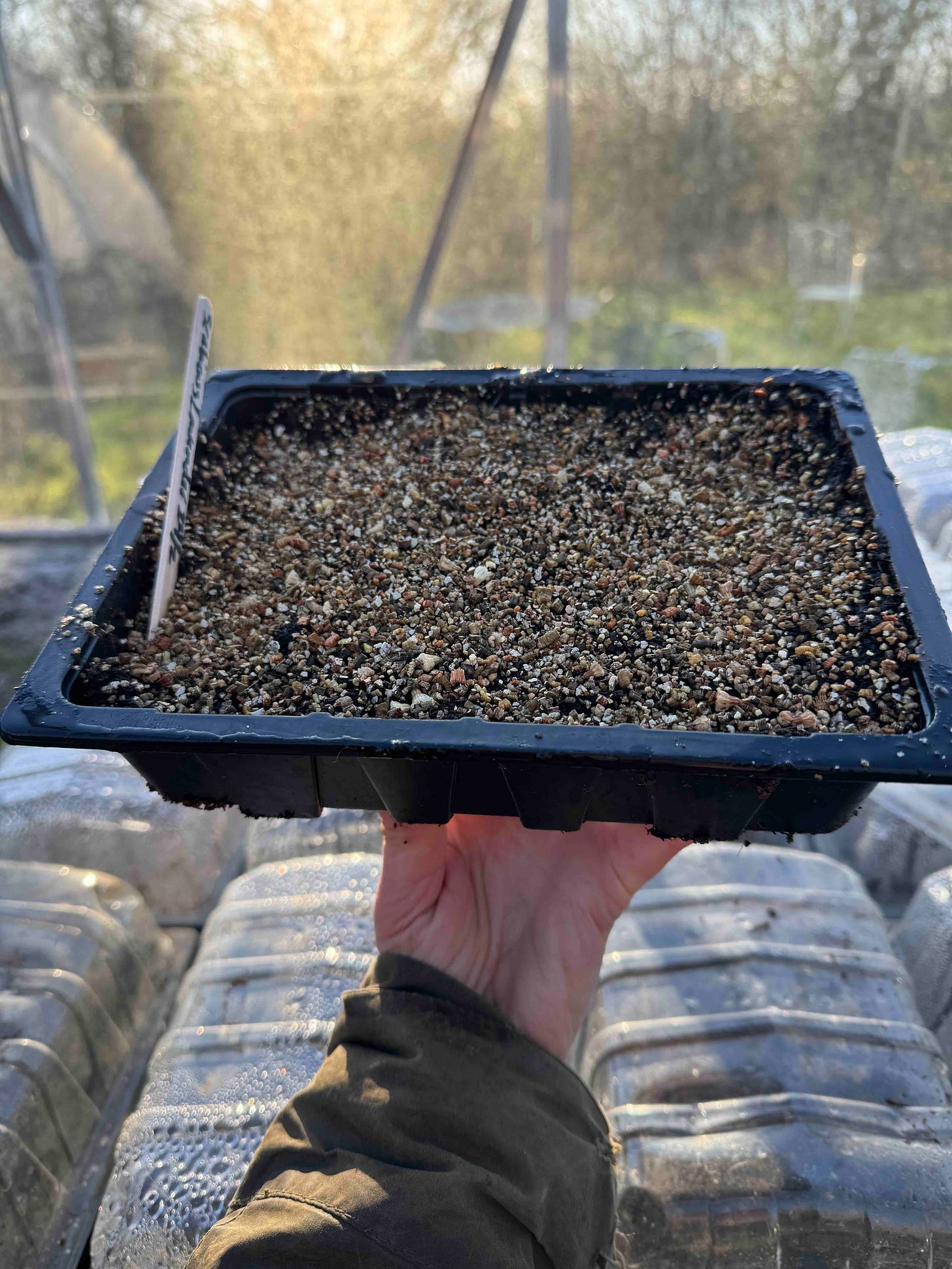The moment is here-time to get sowing!
Now there are sufficient daylight hours, it's time to get the seed packets out and get them growing.
Gardeners all over the country are in a flurry of excitement. 10 hours of daylight-this is the moment we have been waiting for. Enough daylight hours to start sowing seeds and begin a new gardening season.
10 hours of daylight actually happened on the 15th of February. The days are getting decidedly longer, which means our gardens are waking from their slumber, eager to get growing. Shoots on your perennials become visible, the bulbs planted in the Autumn stretch a bit taller, seedlings appear in the flower patch, weeds start to grow.
Although this time of year feels very exciting, and this post is dedicated to seed sowing, I urge you to take caution. Do not make that fool hardy mistake of sowing too many seeds too soon. This is the time for restraint. Ease into the season, there is no need to rush.
February and early March is when we start sowing those seeds that take a little longer to grow. A perfect time to start any easy to grow perennials, such as achillea, echinops and salvias. It is also a great time to make your first Spring sowing of hardy annuals. Ammi, Lavetera, Larkspur all make excellent contenders for a February sowing. Things you should NOT be sowing just yet are all those tender annuals you really want to sow because you are so excited about them. Cosmos, Zinnias, Asters can all wait until late March, early April, when temperatures are a lot warmer and you don’t run the risk of losing them to a hard frost.
Seed sowing, I am happy to say, is not rocket science. You put some soil into a container, sprinkle some seeds on top, cover and hey presto with a little luck little seedlings will appear. There are however some helpful tips you should know that will make the whole process a little less haphazard and a little more considered.
To start with, I always make sure my peat free compost (I use Melcourt with great success) is sufficiently wet when put into the seed tray, and I never water from above. After you have sown your seeds and they begin to grow, instead of disturbing your tiny seeds by adding water from the top, try placing your tray in a larger tray of water, letting the soil absorb it from below. This ensures it absorbs all the water it needs, and prevents water poured from above disturbing newly grown roots. It also prevents the water running straight through the soil, collecting in a puddle and failing to be absorbed by any of the dehydrated compost. I actually almost never water from above. Always from the bottom, where the roots are!
When I cover my seeds after placing them into the newly prepared seed tray, I cover them either with compost that has gone through a sieve, or with vermiculite, which I prefer. By sieving the compost you ensure the little seedlings don’t have too much competition from the soil when trying to grow. This also allows the right light levels through. I prefer vermiculite as it is lighter than soil and helps prevent any mildew or damp occurring, which is death to tiny plants. It’s a little luxury I allow my young seedlings, but it isn’t 100% necessary.
Another thing I always do when sowing seeds is cover them with a plastic lid. Cling film will work in a pinch but not as desirable as hard to reuse. By covering the tray you are creating a cosy moist environment for the seeds to grow. It should mean you won’t need to water the tray again until all the seeds have germinated and grown a little. For us it also serves as a rodent deterrent, although mice have been known to get under the lid, have a little feast and then get back out again WITHOUT ANYONE BEING THE WISER. We now place heavy objects on the lids, or wrap a rubber band around the tray and lid. Once you see the seeds are starting to germinate, whip the lid off and let the soil breathe. If you leave the lid on for too long damp will occur and your seedlings will die.
And that my friends, is pretty much it! When labelling your seeds do make sure to put the date you sowed them. If seeds that are meant to take 10 days to germinate don’t germinate within 25, you know the seed is bad and time to start over. Relinquish that space for seeds that are going to get the job done. In a couple of weeks, once my own seeds have gotten to an appropriate size, we will go over pricking out your seedlings and how to keep them alive.
As a little reminder, this is my last free “Grow” post and from now on all the “grow” and “arrange” posts will be for paid subscribers only. A monthly farm update will always be available for free for everyone to enjoy.
Questions about sowing seeds? Pop them in the comments below, and happy growing!






Please!
Is the pricking out article coming soon?